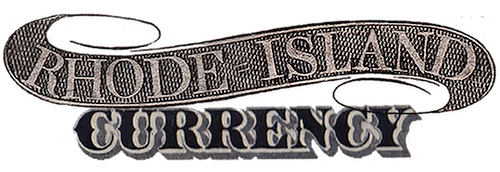Wakefield Bank, South Kingstown
The Wakefield Bank was founded in 1835 and was long associated with the Robinson family. It was initially set up “in the east room” of the Sylvester Robinson residence, a wood-shingled Greek Revival house that fronted Main Street in Wakefield. Its first president was William A. Robinson. He left that position in 1841 and later moved to North Providence, where, from 1858 until his death in 1872, he served as president of the Manufacturers Bank. The second head of the Wakefield Bank was Sylvester Robinson, who may have been William’s cousin.
About 1850, the bank constructed a new home at 430 Main Street, which a 1996 registration form from the National Register of Historic Places describes in this way:
“This rather severe 2-story, hipped roof, granite building may have been the first home of the Wakefield Bank, later known as… the Wakefield National Bank, and the Wakefield Trust Company. Its street front is treated with a pair of plate glass window bays and a central entrance under a visor roof at ground floor level; regularly spaced segmental headed double-hung windows above light the floor above. In use for banking into the 20th century, the building now houses offices.”
Sylvester’s home, the previous office of the bank, was moved and now sits directly behind 430 Main Street (at 428 Main Street).
Thomas P. Wells was the bank’s first cashier and stayed in that position until 1859, when he took the same position at the Landholders Bank in South Kingstown (his father and stepbrother had previously served as the cashier there). In Wells’ place, Daniel McCoon Stedman was hired. D.M.C. Stedman had previously served as cashier of both the Hopkinton Bank and the Bank of South County. He was also the treasurer of the Wakefield Institution for Savings. A map of 1870 shows his residence next door to the Wakefield Bank.
On April 27, 1865, the enterprise joined the national banking system as the Wakefield National Bank with Robinson and Stedman continuing in their roles. When Robinson died in January of 1867, John Babcock took over and stayed until his resignation on April 19, 1870. At that point, Benjamin F. Robinson became president (he was the son of Sylvester and inhabited his father’s former residence, the 1834 Greek Revival house behind the bank.)
As a national, Wakefield was assigned charter #1206. It issued $406,880 in $1, $2, $5 and $10 notes. Only three of these notes have survived to this day, according to the National Bank Note Census.
J. R. Cole’s History of Washington and Kent Counties, Volume 1 ( New York: W. W. Preston & Co., 1889) notes, “The total business for 1886 was $2,771,000, or twice that done in years ago. The total deposits for 1886 were $1,231,000 or two and one-half times the amount in 1870. The average deposits for 1886 were $82,869.81.”
On May 29, 1890, this institution was reorganized as the Wakefield Trust Company, and began business the following July with a branch office at Narragansett Pier. As a trust, it no longer issued national currency. In 1927, the bank constructed a stone and brick classical Greek Revival edifice at 336 Main Street.
In 1950, the Providence National Bank took over Wakefield Trust and on July 17 of that year, their building on Main Street became the trust branch office of the bank. Later, after Providence National Bank merged with the Industrial Trust Company, this was the Wakefield branch of the Industrial National Bank.
While “South Kingston” is listed as the bank’s location on the notes below, today the town’s name is spelled “South Kingstown” with a “w”. The same is true for North Kingston, which became North Kingstown. Adding to the confusion, within South Kingstown there remains a village named Kingston.
(This bank should not be confused with the Wakefield Bank of Wakefield, Massachusetts which, coincidentally, also became the Wakefield National Bank, charter #1455, and then in 1916 reorganized as the Wakefield Trust Company. As a trust company, it also built a structure that bears a good resemblance to the image below.)
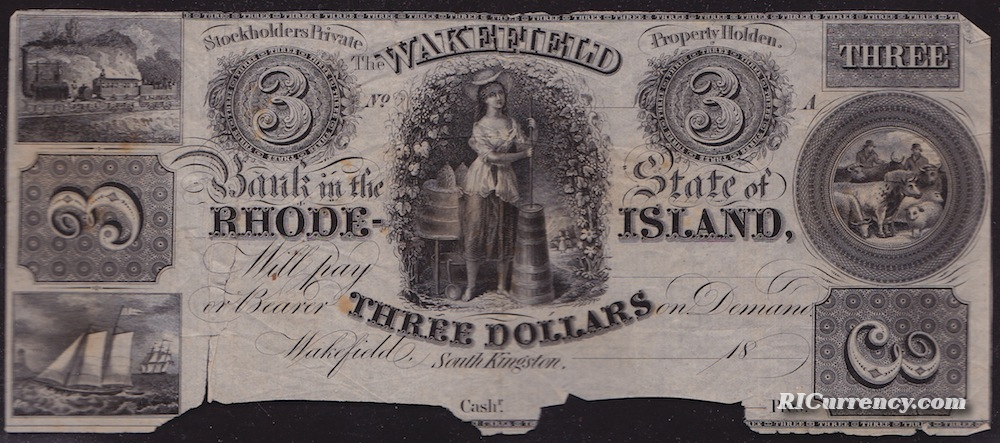
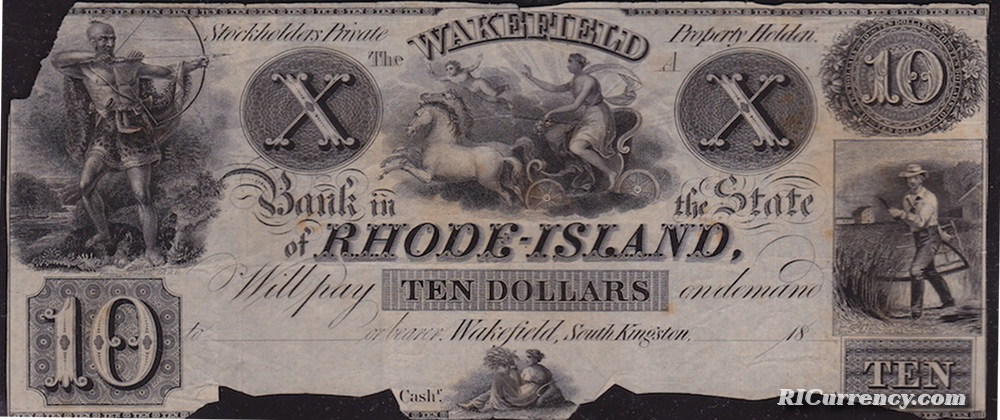
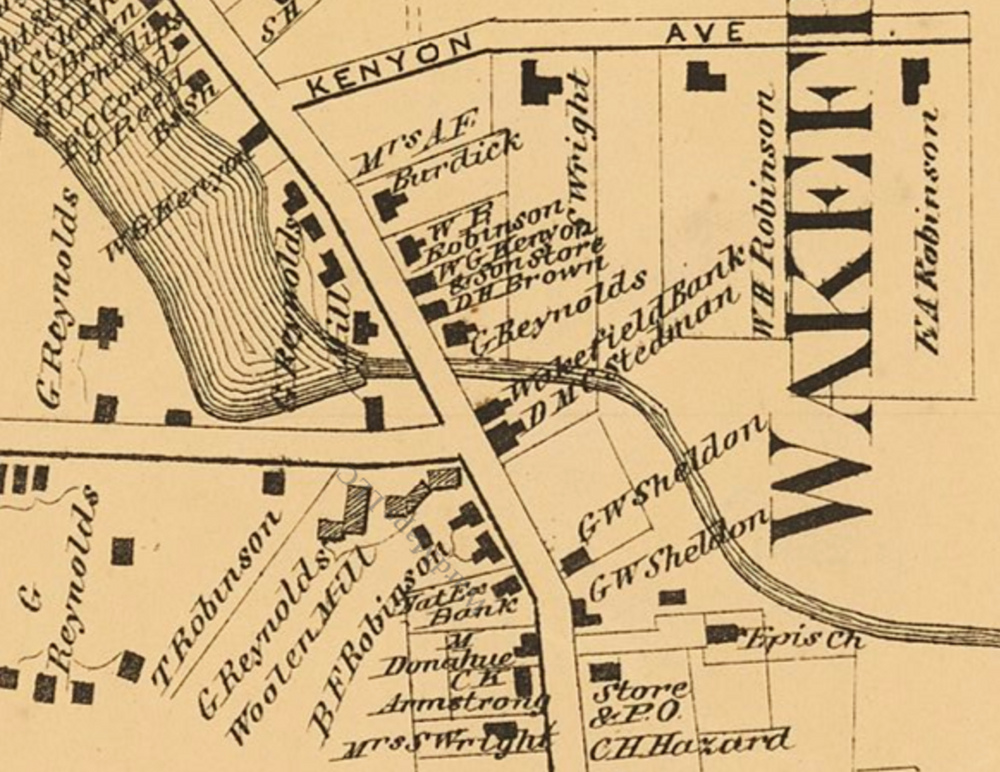
A detail map of Wakefield with the Wakefield Bank at center, on the right side of Main Street. Below it is the the home of
D.M.C. Stedman, the bank’s cashier. From D.G. Beers, Atlas of Rhode Island, 1870.
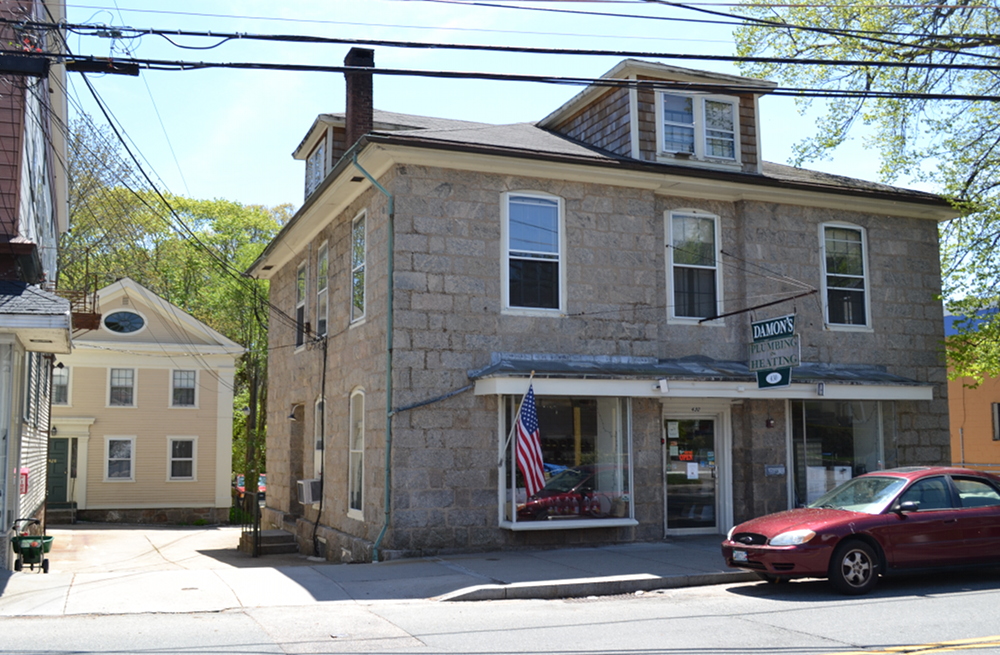
The bank’s “rather severe 2-story, hipped roof, granite building” erected circa 1850 at 430 Main Street, Wakefield. This is the location identified on the 1870 map above.
Visible in the back is the yellow clapboard colonial that was the bank’s first home. It was moved off the street to make room for the granite structure.
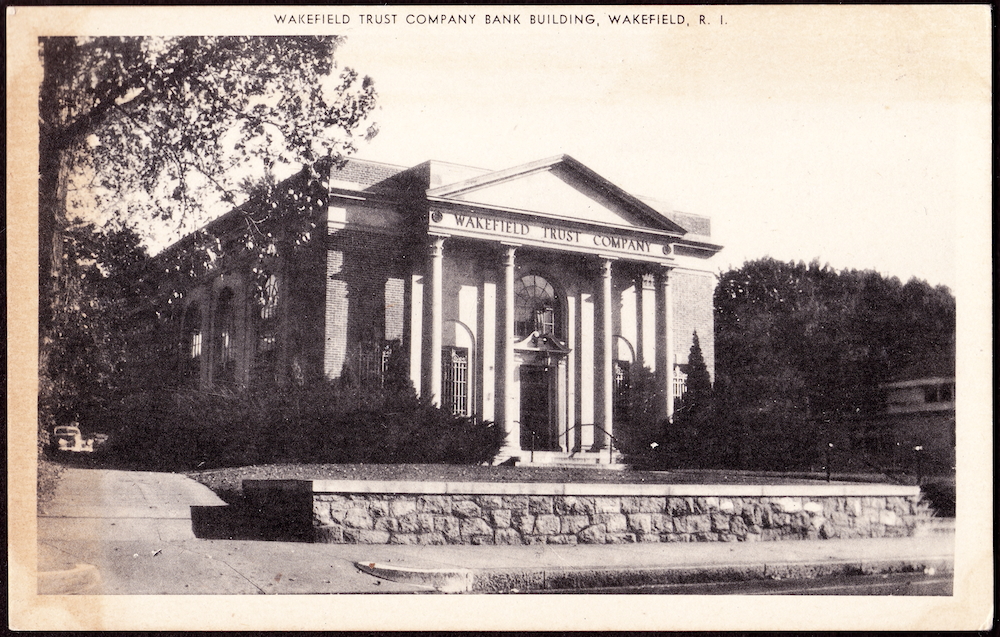
Wakefield Trust Company, 336 Main Street, constructed in 1927. A vintage postcard showing the bank sometime before 1950.
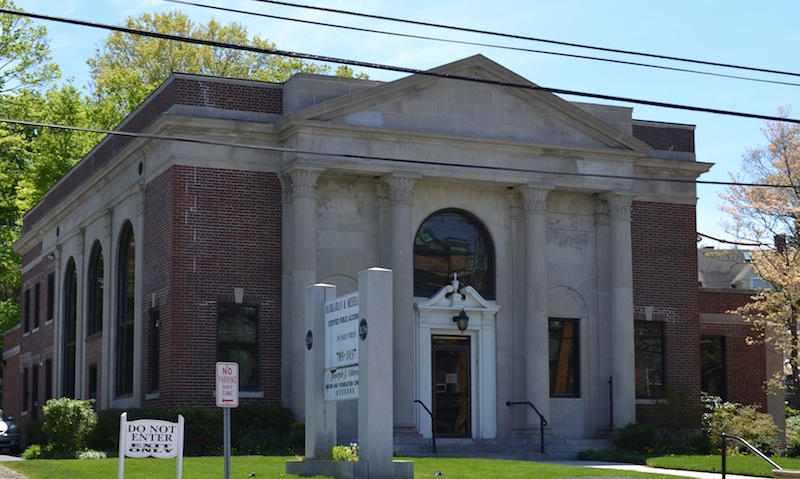
336 Main Street today. This structure was the Wakefield branch of Industrial National Bank after 1950.
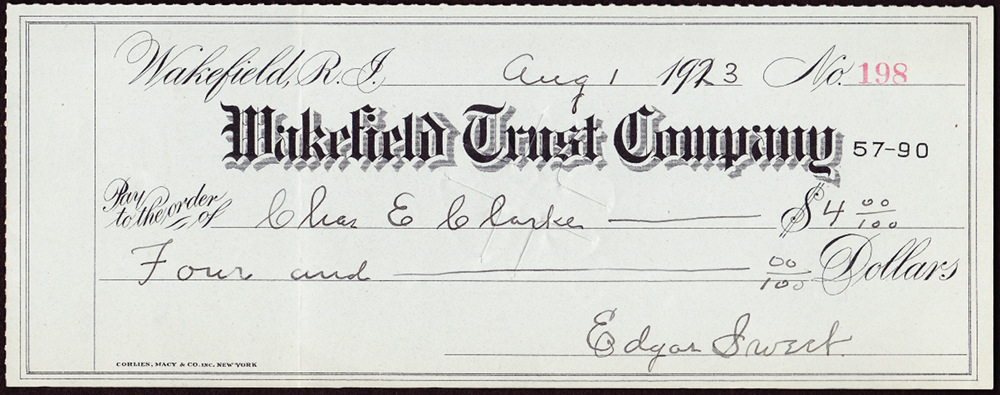
A bank check from 1923 on Wakefield Trust, signed by Edgar Sweet.
